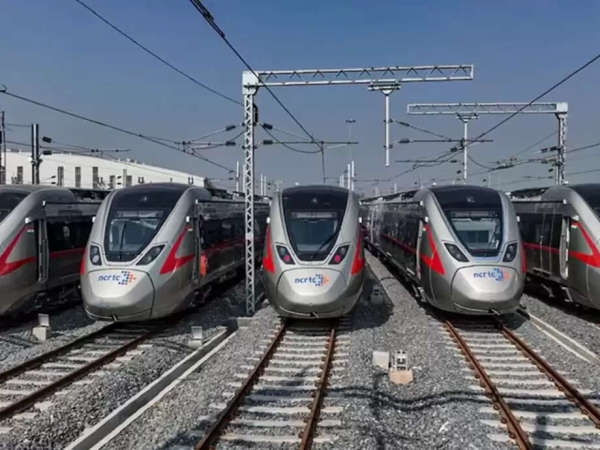
This new facility will greatly facilitate passengers. Upon disembarking from the metro, you can directly board the Namo Bharat train, saving time and making travel easier. This initiative aims to further improve the transport system in the National Capital Region (NCR), enabling hassle-free travel.
Traveling in the National Capital Region (NCR) is about to transform. The plan to integrate the new Namo Bharat trains with the Delhi Metro network will provide a seamless, multi-modal travel experience for passengers. Under this initiative, the high-speed Regional Rapid Transit System (RRTS) is being directly connected to the capital's metro lines, creating an integrated public transport network.
Station-to-Station Connectivity: According to a TOI report, four major stations on the Delhi-Ghaziabad-Meerut RRTS corridor are now fully connected with the Delhi Metro. At these hubs, passengers can change systems without leaving the station premises. Sarai Kale Khan, the Namo Bharat station, is connected to the Delhi Metro's Pink Line. New Ashok Nagar station is connected to the Blue Line. Passengers can use both the Pink and Blue Metro lines at Anand Vihar. Ghaziabad RRTS station is connected to the Red Line. Regular announcements are made on both train services to inform passengers about this connectivity.
Network of Networks: Physical integration has been achieved through footbridges, travelators, escalators, and elevators. This design ensures seamless transfer between different transit systems. According to TOI, an official said that the idea is to create a network of networks. This will allow passengers to travel easily from Delhi to cities in NCR using a combination of Metro and Namo Bharat trains.
A Delhi Metro Rail Corporation (DMRC) official confirmed that the extension to Sarai Kale Khan and integration there will significantly improve travel within Delhi-NCR. The integration plan extends beyond the current corridor. According to TOI, future RRTS lines are also being designed with connectivity in mind. The proposed Delhi-Gurugram-SNB-Alwar corridor could be connected to the INA, Munirka, Aerocity, and Cyber City metro stations. The Delhi-Panipat-Karnal corridor could be integrated at Indraprastha, Kashmere Gate, and Burari crossings. Their detailed project reports are pending approval, so more connection points could be added.
This multi-modal integration is a key design principle for the RRTS project. It aligns with the National Gati Shakti Master Plan, which aims to synchronize all infrastructure connectivity. An official from the National Capital Region Transport Corporation (NCRTC) stated that the Namo Bharat stations have been designed to seamlessly connect with the metro, railways, and buses. According to a TOI report, the goal is to create an interconnected network that ensures efficient and hassle-free travel.
This multi-modal integration is a key design principle for the RRTS project. This aligns with the National Gati Shakti Master Plan, which aims to synchronize all infrastructure connectivity. An official with the National Capital Region Transport Corporation (NCRTC) explained that the Namo Bharat stations are designed to seamlessly connect with the metro, railways, and buses. According to a TOI report, the goal is to create an interconnected network that makes travel efficient and hassle-free.
With the 82-km-long Delhi-Ghaziabad-Meerut corridor soon to be fully opened, this integrated network is set to redefine regional travel. It offers a faster, easier alternative to NCR's notorious traffic jams.
Disclaimer: This content has been sourced and edited from News 18 hindi. While we have made modifications for clarity and presentation, the original content belongs to its respective authors and website. We do not claim ownership of the content.